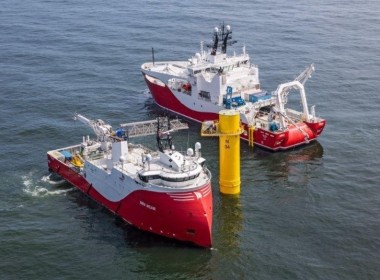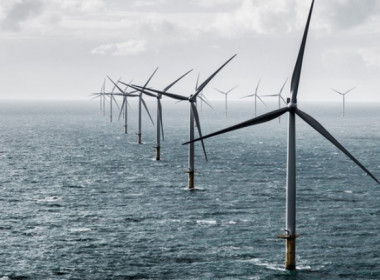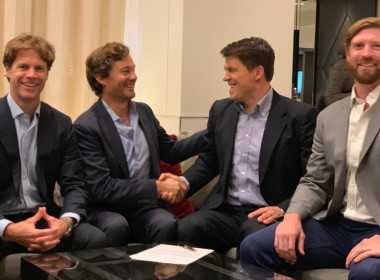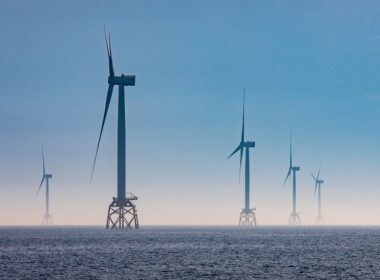COLUMN | The wind beneath my wings: Ørsted, Siemens Gamesa, Vestas, MingYang, Venterra, REM and Norwind [Offshore Accounts]
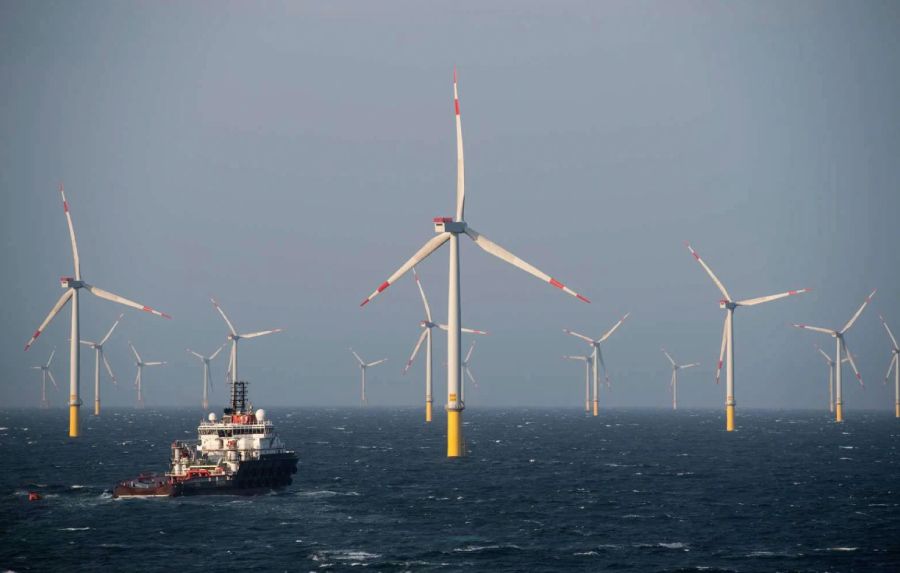
Profit warnings, disappointing revenues, and unfortunate surprises with both costs and margins. Sounds a lot like the offshore oil and gas services industry?
Actually, I am referring to offshore wind, where recent developments have reflected a tough market for both windfarm developers and their suppliers, even as offshore wind turbine installations increase all around the world and governments rush to add renewable capacity.
The wind farms keep being built
You can read market leader Ørsted’s summary of the forthcoming tenders for offshore wind farms on pages 15 to 17 of their third quarter results presentation here. This is an industry that is still going full throttle, with new projects sprouting in twelve European countries, four Asian states (excluding mainland China, where foreign wind power generators cannot operate), and both the USA and Australia.
In Canberra, the federal government has submitted the Offshore Energy Bill into parliament with approval expected in late 2021. This would establish a licensing system for developing offshore Australian wind projects and allow the federal minister to declare offshore wind zones. State governments are also developing state level legislation in Australia, Ørsted says, some of which is expected to be passed later this year.
Two decades of future growth ahead
The hockey stick graph of ever growing offshore turbine installation, which carried Eneti to its listing (here), remains on course for now. Ørsted is forecasting that worldwide offshore wind capacity (excluding China) will grow by 19 GW per year between 2025 and 2030, and then by 24 GW per year from 2030 to 2035.
It also sees significant opportunities to build a large green hydrogen business using excess wind power to create hydrogen from seawater by electrolysis.
No wind beneath Ørsted’s wings
But despite this potent big picture backstory, Ørsted’s results were very unimpressive. The Danish wind farm operator reported that it had suffered a reduction in forecast profitability of DKR2.5 billion (US$389 million) caused by lower wind speeds in Northern Europe in the first nine months of this year, compared with last year. Wind speeds in the third quarter of 2021 averaged 7.6 m/s, which was lower than the normal wind speeds of 8.3 m/s. As a result, less electricity flowed from the company’s turbines, so cash flow from its offshore wind farms was down US$217 million. This represented a fall of 50 per cent, and the company’s overall operating cash flow fell 87 per cent. Net operating profits were down 17 per cent year on year.
This was the second quarter in a row where Boreas, the god of wind, had left Ørsted stranded. Mads Nipper, the company’s chief executive of the Danish group, told the Financial Times (here) that the second quarter of this year was the third-worst quarter for wind in the past 22 years in the North Sea.
“Out of 88 quarters on record,” Mr Nipper said, “it is an extraordinarily poor wind quarter. It is very serious. It is like you’re a farmer and it doesn’t rain.”
The wind drought continued through to the end of September.
Ørsted’s coal and gas-powered results
The only salvation for the Danish group came from an improbable source: its onshore power stations burning “sustainable biomass” (as Ørsted describes it) and, er, coal and gas. Who knew that Ørsted even operated coal and gas power stations?
It does, and these facilities delivered exceptionally good performance, generating over US$180 million of EBITDA as European electricity prices shot up on the back of gas shortages. These plants produce electricity, mainly with biomass, and then use the waste heat for district hot water heating in Denmark. As a consequence, the coal burned by this greenest of green companies increased by 18 per cent year on year in the quarter, whilst gas consumption was up six per cent (see the environmental report here).
The opening bullet point of the results began by trumpeting “exceptional performance by Combined Heat and Power plants, and high earnings from gas business keeps us on track for full-year guidance despite lower wind speeds.”
Not what you expect from an Ørsted release.
Dog of an investment this year
Shareholders have less reason to be impressed, as well. If you bought Ørsted shares on the first trading day of 2021, you would have seen your investment decline 35 per cent in the course of 2021. Over five years, Ørsted has outperformed all the oil majors, but, year to date, both Shell and BP have delivered a 30 per cent increase in their share prices.
To my mind, Ørsted is now a sitting duck for a takeover by an ambitious European oil and gas player such as Shell, TotalEnergies, BP or ENI. Its operating profits have shrunk alarmingly this year, and its balance sheet is increasingly stacked with debt (up 158 per cent year on year). The majors are keen to demonstrate their renewable capabilities. Ørsted’s market capitalisation is just under US$60 billion. Shell’s is over US$170 billion. Watch this space.
Buying the world’s largest offshore wind developer would put fresh wind into the buyer’s sails – and its sales.
Siemens Gamesa crushed
In July, we had highlighted how rising cost inflation was savaging the profitability of the manufacturers of offshore wind turbines in the west (here), as steel prices rose. We warned that Siemens Gamesa forecast that it would barely break even for 2021.
Its results for the July to September quarter came out here on Bonfire Night in the UK (November 5). And what a bonfire it was – net losses of nearly US$300 million for the quarter, including restructuring costs of US$50 million, excuses that the company faced “onerous contracts” related to raw materials and transport, and more red ink than on Guy Fawkes’ death warrant.
Guess what? There’s a long term vision!
Even as offshore wind turbine sales soar, the western companies making them cannot make money. Siemens Gamesa now forecasts that its results in 2022 are “still impacted by supply chain environment” and that 2022 revenues are “expected to decline between two per cent and seven per cent” and margins barely above zero.
But hidden away in the small print was a warning that “given current supply chain constraints, we cannot exclude that a shortage of materials and components and/or a lack of freight capacity may have an impact on our business, especially on timelines and costs of larger projects.” Who would have guessed?
However, management assured investors in the presentation that Siemens Gamesa has “a long-term vision” (What else?), that it has “confirmed and to be achieved in 2024 to 2025,” dates so far away in the future as to be meaningless. This long-term vision features healthy margins of eight to ten per cent “supported by strong momentum in renewables.”
Year to date, the shares are down 50 per cent. Even with “strong momentum in renewables” the company lost money in 2021 and in 2020.
Vestas burned
One might have written off Siemen Gamesa’s shocking results as due to single company issues, had Vestas not announced equally dreadful results for the same reasons in the same week (here). Its quarterly profit fell 57 per cent year on year, as the company blamed “global supply chain disruptions” and higher raw material and transport costs. Vestas announced an additional provision of around US$60 million “related to cost inflation in components and transport,” which the CEO said he expected to continue through 2022. The CFO also announced she was resigning (never a good sign).
At the start of the year, Vestas had estimated its margins would be between six and eight per cent. In August, it trimmed them to between five and seven percent. The Danish turbine maker now foresees it will have margins of just four per cent for the full year.
Revenues were actually up 16 per cent, increasing to over US$6 billion, but profits more than halved. Year to date, Vestas shares are down 28 per cent.
Chinese manufacturers move forward, MingYang goes large
In July, we warned here that Chinese manufacturers of offshore wind turbines were threatening to do to the western manufacturers like Vestas and Siemens Gamesa what Chinese solar panel manufacturers had done to their western competitors earlier this century: completely destroy them, even as demand surges.
Further evidence of the move of Chinese turbine makers up the technology chain came with the announcement (see here) that MingYang Smart Energy is in the process of building the world’s largest offshore wind turbine yet, the 16MW MySE 16.0-242 wind turbine. Once the units are delivered, MingYang’s turbines will surpass the current world leader, the 14MW Haliade-X turbine manufactured by GE.
For years, the Western manufacturers like GE, Vestas and Siemens Gamesa have relied on their technical edge to build bigger turbines than the Chinese, and to dominate the top end of the market, offshore, even as they have ceded market share in smaller onshore turbines. Now they face head-on challenges from a Chinese manufacturer in the biggest offshore turbines, and in floating wind.
The inability of Vestas and Siemens Gamesa to make money today suggests that they are ill-equipped to compete against Chinese manufacturers. Protectionism may help them in Europe and the US, but in the rest of the world, the challenge from China looks inexorable.
The smart money might bet on MingYang Smart Energy in the longer term.
Venterra’s here with Asfari at the helm
When we last covered Petrofac’s former CEO, founder and director Ayman Asfari just three weeks ago (here) it was in the context of him not being involved in the company’s massive bribery scandal, which resulted in the conviction of several less senior members of management, and a huge fine for the company from the UK authorities, as it was convicted on seven counts of corruption.
Conservative Party donor Mr Asfari fortunately emerged with his own good name unsullied by the unsavoury and criminal events happening elsewhere in the company whilst he was running it. Now, he is putting his oil and gas past behind him, even as he and his family remain the largest shareholders in Petrofac.
A fresh start
Mr Asfari instead intends to focus on, wait for it… offshore wind! Just after Petrofac announced it needed to raise additional capital from investors of $275 million and that it also planned a US$500 million bond issue to help resolve its strained finances, Mr Asfari announced the creation of Venterra. Venterra says it will (here) “create a global services champion for offshore wind energy.”
Venterra, not to be confused with a Starbucks coffee cup size, nor the Ace Pet Detective of the 1994 film (here), plans to list on the UK stock exchange and invest close to US$350 million in various wind energy service companies. Mr Asfari has hired Petrofac’s former COO of Integrated Services, Rob Jewkes, as Venterra Group CEO.
The old band is back together, but with a new, sustainable tune!
Venterra is a consolidation play
Venterra plans to buy thee businesses, Gavin and Doherty Geosolutions of Ireland, and UK-based Osbit and FoundOcean, and create a British wind services champion offering everything from walk to work gangways to grouting and turbine foundations.
Given the waning investor excitement for various existing wind entities, as we have highlighted this week, and given the dismal performance of Petrofac, where he remains an investor, one feels that perhaps Mr Asfari is late to the wind party, but better late than never. We’ll keep you posted on his progress.
Also pivoting to wind… the Farstad family
Having seen their investment in his family shipping company Farstad Shipping reduced to nought after a debt-fueled expansion drive and a merger with Solstad, the Farstad family has announced a pivot to, guess what… yes, offshore wind!
Joining forces with the Kleven and Volstad families, Sverre Farstad and his children announced the formation of Norwind, a new force in the service operations vessel (SOV) segment servicing offshore wind farms. You can read more about the company on its website here.
Norwind announced a newbuilding contract with Vard for two SOVs to be built in Romania and Vietnam, and the conversion of a PSV that Vard itself owns after the owner defaulted in the crisis. This Vard PSV 08 unit represents a bold attempt to re-purpose offshore vessels for service in wind at lower cost than a newbuilding. Taiwan’s Dong Fang Offshore has already done this by converting the former Swire Pacific Offshore construction vessel Pacific Constructor into the SOV Orient Constructor for service in Taiwan.
The Vard release is here and the yard values the three Norwind SOV contracts at US$164 million.
Second Pivot back to his roots
When we last heard of Mr Farstad in 2019, he was launching his return to the industry, buying the Ulstein design PX121 PSV Blue King from the Norwegian builder under the auspices of Sverre Farstad and Co, his new offshore vessel owning company in Norway.
The ship was quickly renamed Farland, the same name as Farstad Shipping’s first vessel which it acquired in 1959, and was an 83.4-metre-long DP2 unit, which originally delivered from Ulstein Verft in Norway in May 2016.
In an interview from 2019, which you can read online here, under the headline “Sverre Farstad lost his company to the competitor, now he’s betting again,” Mr Farstad’s business partner explained that “it looks better on the Norwegian shelf than it’s been a long time. Many companies still struggle with debt. Now we have the opportunity to restart without the heavy backpack…”
Unfortunately, Covid dashed those hopes as oil plunged below US$30 per barrel, and planned growth in PSVs never materialised. But the soaring market for wind farm support now offers Mr Farstad, his family and partners from Volstad and Kleven the chance to rebuild their fortunes.
Bubble building
As we highlighted in April (here), there is more and more investor interest in SOVs as Awind (now renamed IWS Fleet) and Edda Wind prepared for IPOs on the Oslo stock exchange, with both companies ordering speculative SOVs in China and Spain, respectively. We expect that Norwind will be listing soon as well.
The windfarm market offers long-term contracts that have been sorely lacking in the oil and gas segment. But competition is hotting up, as traditional and well-established safety standby operators like Esvagt and North Star also win term contracts for newbuild SOVs.
Aage Remøy
In Norway, privately held REM Offshore under its chairman, Aage Remøy, has also built a strong position in the SOV market. REM announced a contract in late 2020 with Green Yard Kleven for a Havyard 833 design newbuild called REM Energy (here), which was promptly fixed against a term charter with loss-making Siemens Gamesa (here).
Then, this August, Vard announced that REM had signed a US$115 million contract for two newbuild SOVs (here) plus two additional option vessels. The first REM newbuilding will be delivered from Vard in Norway in first half of 2023, the builder has stated. The hull will be built at Vard Braila in Romania. The second vessel will be built and delivered by Vard Vung Tau in Vietnam, scheduled for delivery in 2024.
Speculation can’t go wrong?
Neither of these REM Vard vessels has contracts yet, to my knowledge. Nor do the new Norwind vessels. Yet. And nor does one of the IWS Fleet vessels (former Awind).
With Farstad, Volstad and Kleven joining the fray as Norwind, the competition in the SOV market just got tougher. The fact that the second-hand PSV that Vard is offering to Norwind can be converted as an SOV for less than US$50 million suggests that repurposing existing offshore units this may be a new front in the offshore war.
As Siemens Gamesa struggles to break even, expect the costs of SOVs to start appearing on the radar just as Norwegian shipowners add more speculative capacity to this growing segment.
Offshore wind shows every sign of being as speculative and volatile as the offshore oil and gas sector it is supposed to replace.
Background reading
We covered Ørsted‘s first profit warning of the year here (along with Equinor’s warnings of falling returns from its wind business as well).
The speculative battle amongst the wind turbine installation vessel owners is dealt with here.
For more news, opinion and vessel reviews as part of this month’s Offshore Week, click here.


![COLUMN | The wind beneath my wings: Ørsted, Siemens Gamesa, Vestas, MingYang, Venterra, REM and Norwind [Offshore Accounts]](https://www.bairdmaritime.com/wp-content/uploads/OFFSHORE-WEEK-Banner-860x130-3.gif)
